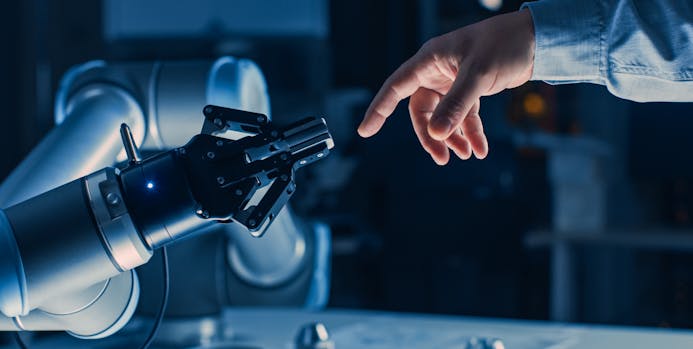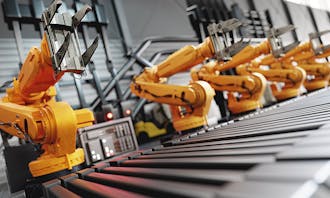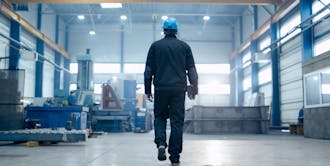Robotics: collaboration or cooperation?
2020-02-19
2 min read
More and more often, factory workers in all fields of manufacturing are sharing their working space with a particularly efficient colleague — a robot. Unlike human workers, robots never get sick or tired, so it’s no wonder that manufacturers are heavily investing in them to speed up production and improve accuracy. However, there are tasks where only the dexterity and decision-making skills of a human will do. Consequently, collaboration between robots and human workers offers the most benefits.
A robot can work alongside humans either collaboratively or cooperatively. Collaboration refers to when a robot and a human work simultaneously on the same product or part. Typically, a robot presents a part and holds it still, while the operator works on it. Cooperation, on the other hand, identifies a situation where robot and human share a common working space, but work on different parts.
Consequently, the right robotic solution essentially depends on the level of interaction required by each application. Cooperative industrial robots are the best choice for applications that require limited human-machine interaction, such as in a packaging or palletising station, where human and robot never work on the same task at the same time. Cooperative robots are less agile and more cumbersome than cobots, but more suitable in case of heavy components, as they tend to be more resistant to high payloads.

However, they are generally not programmed by the end user, meaning that they could be limiting in applications where settings need to be changed often, such as in a plants producing big quantities of highly customised items. In this case, a cobot might be the best solution. Since they can be easily and quickly programmed by the operator, cobots are generally recommended for small batch manufacturing.
Cobots are also more suitable to applications that require close collaboration with humans, especially in small work cells. While cobots can take smaller payload than industrial robots, they can quickly adjust to unpredictable environments.
State-of-the-art cobots also boast integrated vision systems that allow them to rapidly adapt to environmental changes without stopping. For example, the RapidPlan and RapidSense applications recently developed by Realtime Robotics allow the company’s cobots to avoid collision with a human operator without halting production. Instead of just stopping, these cobots calculate an alternative route and carry on with their task.
Whether collaborative or cooperative, robotic technology is now an integral part of the smart factory. Though robots will probably never completely substitute the common sense and problem-solving abilities of skilled human workers, they can successfully complement them by taking charge of heavy, repetitive and monotonous tasks. It’s the perfect combination!



